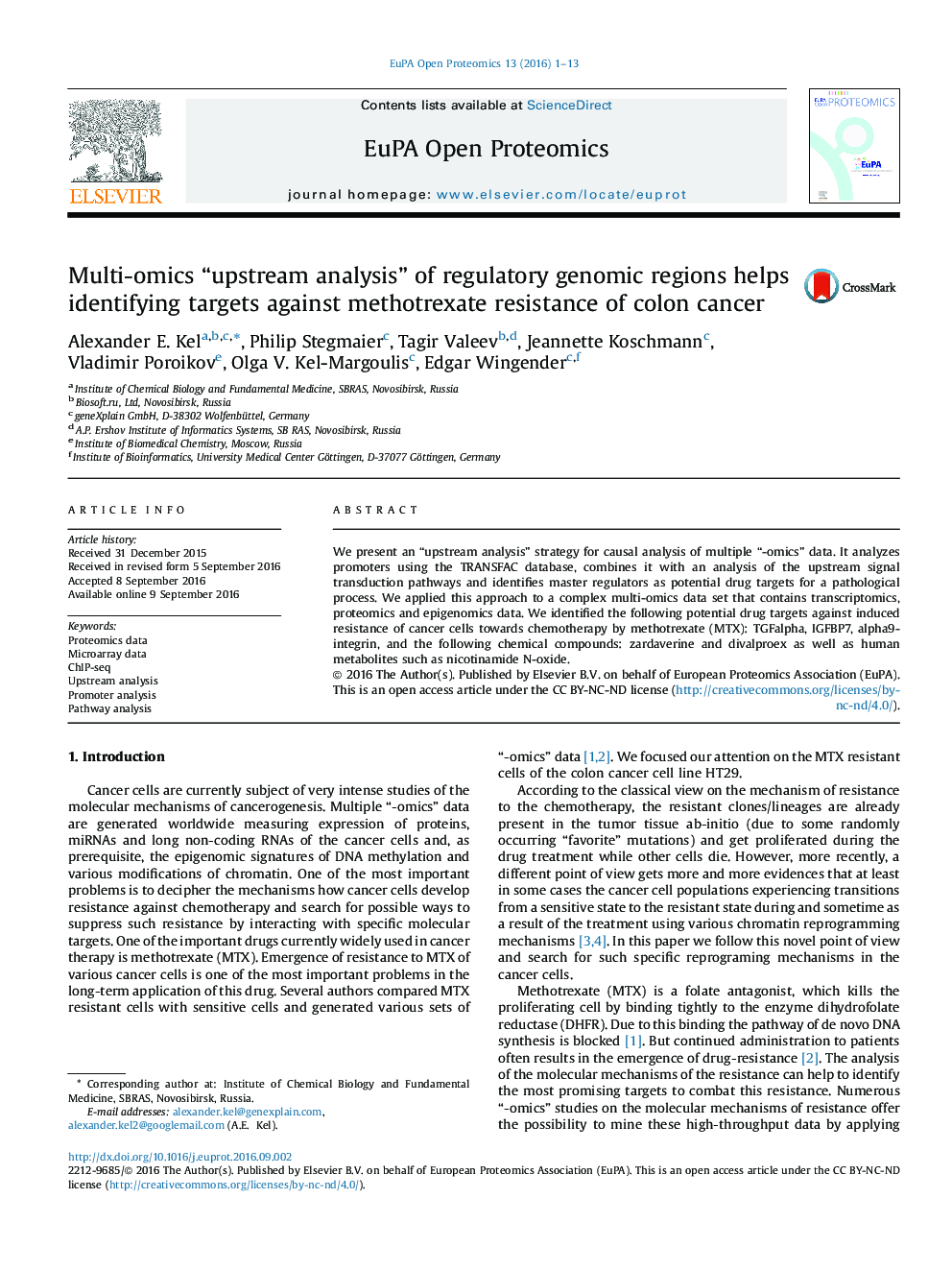| کد مقاله | کد نشریه | سال انتشار | مقاله انگلیسی | نسخه تمام متن |
|---|---|---|---|---|
| 5132372 | 1491796 | 2016 | 13 صفحه PDF | دانلود رایگان |
• Upstream analysis strategy for multi-omics data is proposed.
• Drug targets are predicted by search for TFBS and analysis of signaling network.
• Methotrexate resistance data include transcriptomics, proteomics and epigenomics.
• Predicted targets are: TGFalpha, IGFBP7, alpha9-integrin.
• Predicted drugs are: zardaverine, divalproex and human metabolite nicotinamide N-oxide.
We present an “upstream analysis” strategy for causal analysis of multiple “-omics” data. It analyzes promoters using the TRANSFAC database, combines it with an analysis of the upstream signal transduction pathways and identifies master regulators as potential drug targets for a pathological process. We applied this approach to a complex multi-omics data set that contains transcriptomics, proteomics and epigenomics data. We identified the following potential drug targets against induced resistance of cancer cells towards chemotherapy by methotrexate (MTX): TGFalpha, IGFBP7, alpha9-integrin, and the following chemical compounds: zardaverine and divalproex as well as human metabolites such as nicotinamide N-oxide.
Figure optionsDownload as PowerPoint slide
Journal: EuPA Open Proteomics - Volume 13, December 2016, Pages 1–13
